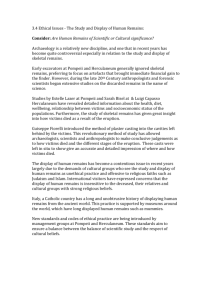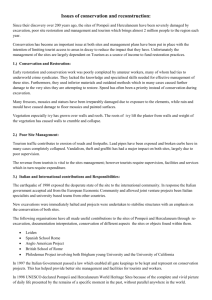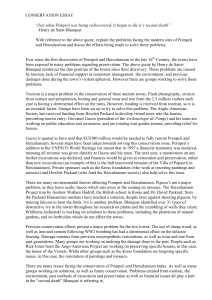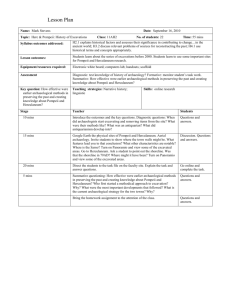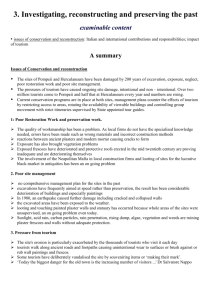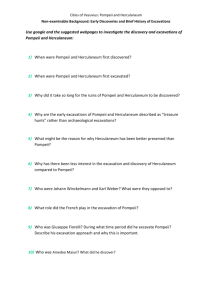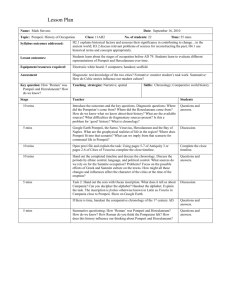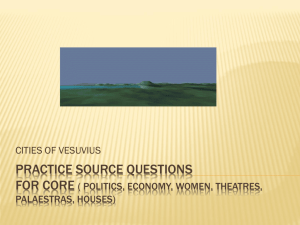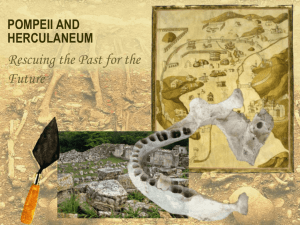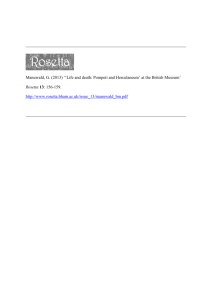Site Problems Essay
advertisement
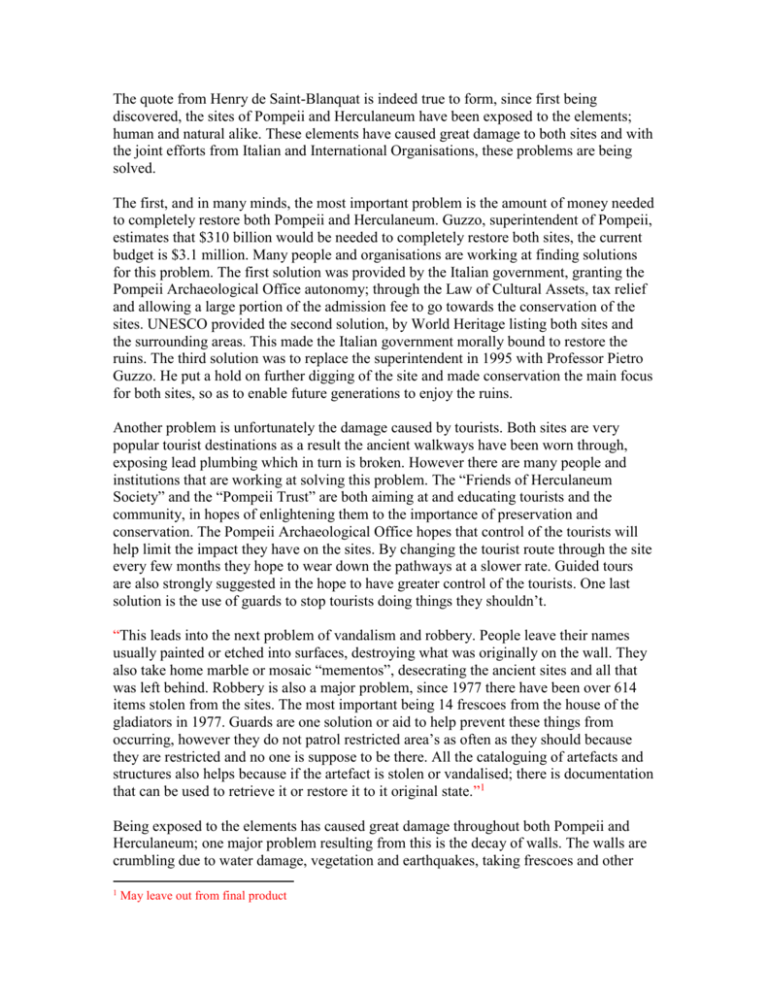
The quote from Henry de Saint-Blanquat is indeed true to form, since first being discovered, the sites of Pompeii and Herculaneum have been exposed to the elements; human and natural alike. These elements have caused great damage to both sites and with the joint efforts from Italian and International Organisations, these problems are being solved. The first, and in many minds, the most important problem is the amount of money needed to completely restore both Pompeii and Herculaneum. Guzzo, superintendent of Pompeii, estimates that $310 billion would be needed to completely restore both sites, the current budget is $3.1 million. Many people and organisations are working at finding solutions for this problem. The first solution was provided by the Italian government, granting the Pompeii Archaeological Office autonomy; through the Law of Cultural Assets, tax relief and allowing a large portion of the admission fee to go towards the conservation of the sites. UNESCO provided the second solution, by World Heritage listing both sites and the surrounding areas. This made the Italian government morally bound to restore the ruins. The third solution was to replace the superintendent in 1995 with Professor Pietro Guzzo. He put a hold on further digging of the site and made conservation the main focus for both sites, so as to enable future generations to enjoy the ruins. Another problem is unfortunately the damage caused by tourists. Both sites are very popular tourist destinations as a result the ancient walkways have been worn through, exposing lead plumbing which in turn is broken. However there are many people and institutions that are working at solving this problem. The “Friends of Herculaneum Society” and the “Pompeii Trust” are both aiming at and educating tourists and the community, in hopes of enlightening them to the importance of preservation and conservation. The Pompeii Archaeological Office hopes that control of the tourists will help limit the impact they have on the sites. By changing the tourist route through the site every few months they hope to wear down the pathways at a slower rate. Guided tours are also strongly suggested in the hope to have greater control of the tourists. One last solution is the use of guards to stop tourists doing things they shouldn’t. “This leads into the next problem of vandalism and robbery. People leave their names usually painted or etched into surfaces, destroying what was originally on the wall. They also take home marble or mosaic “mementos”, desecrating the ancient sites and all that was left behind. Robbery is also a major problem, since 1977 there have been over 614 items stolen from the sites. The most important being 14 frescoes from the house of the gladiators in 1977. Guards are one solution or aid to help prevent these things from occurring, however they do not patrol restricted area’s as often as they should because they are restricted and no one is suppose to be there. All the cataloguing of artefacts and structures also helps because if the artefact is stolen or vandalised; there is documentation that can be used to retrieve it or restore it to it original state.”1 Being exposed to the elements has caused great damage throughout both Pompeii and Herculaneum; one major problem resulting from this is the decay of walls. The walls are crumbling due to water damage, vegetation and earthquakes, taking frescoes and other 1 May leave out from final product valuable historical artefacts with them. There are many people from both the Italian and International efforts, working at stopping this from happening. Internationally there is a wide range of organisations working together including the Herculaneum conservation project, Hewlett Packard, archaeologists and ICCROM (International Centre for the Study of preservation and Restoration of Cultural Property. All of which are aiming at slowing the decay and mapping the extent and nature of decay. The joint efforts of Soprintendenza Archeologica diPompei and the centre DIAPREM (Dept. of Architecture of the University of Ferrara) from the Italian efforts are working at restoring wall paintings in Pompeii. Including various electoral inscriptions on the via dell’Abbondanza, felters’ shops, dye works, furnace and an inn. During excavations of Herculaneum the villa of Papyri was discovered. Containing over 1800 scrolls of papyrus, primarily the writings of Epicurean philosophers in particular Philodemus, it became very clear to all that this find must be preserved and studied. However the damage done to the scrolls during the eruption was immense, and ongoing damage from being exposed to the elements continued the breakdown of the scrolls. The Philodemus Project is a solution to the conservation of these scrolls. This project aims at preserving the scrolls as well as reconstructing them and what they contain. With the help from government and private funding the preservation of these artefacts has been secured. “Archaeology is destruction” Sir Mortimer Wheeler once said. By discovering and unearthing the cities of Pompeii and Herculaneum, everything they contain will begin to die a slow second death. If it weren’t for the help of so many people and organisations these sites and all they contain could be lost to the black market and mankind forever, suffering a faster and more painful death than it first experienced. Thanks to the help fro Italian and International efforts, issues surrounding the preservation and conservation of Pompeii and Herculaneum are being solved. Allowing future generations to enjoy what we marvel at today in the same way we do now.


